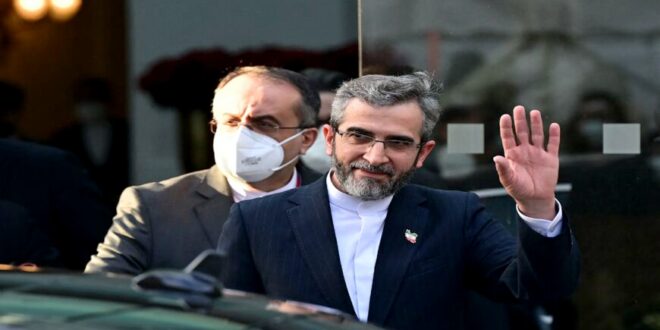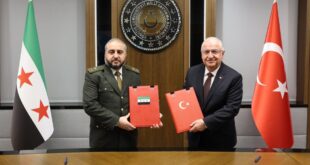Ali Bagheri Kani may wait for the other side to bring “something to the table” now.
It’s a deja vu moment in Vienna, where talks between Iran and world powers have resumed to revive the 2015 nuclear agreement. Aside from the lockdown, the freezing temperatures, the new faces, and a pinch of pessimism and caution, nothing seem to be different from the old days — at least in principle. In practice, however, these are different days, resembling a blend between the pragmatism of the 2013-2015 talks and the aggressiveness of the 2008-2013 negotiations.
Ali Bagheri Kani, Iran’s new top negotiator, made his debut in Vienna. The man who used to be a fierce opponent of the 2015 nuclear deal, known formally as the Joint Comprehensive Plan of Action (JCPOA), is himself the one talking to world powers in what is seen as a mutual understanding to revive the same accord.
When this correspondent met him in Vienna, he was very cautious not to show any sort of pessimism toward the path, though he was clear that though negotiations are performed within a framework of give and take between all parties, his country gave what it should give in 2015, and it’s now the other side’s turn to bring something new to the table.
But the table of 2021 isn’t the same as that of 2015. While the tabletop could appear the same, the four legs carrying it have been going through serious changes over the past years. The developments that followed the withdrawal of former US President Donald Trump from the deal in May 2018 — including the sanctions that were imposed and reimposed on Iran by the United States and the developments in Iran’s nuclear program that saw it enriching uranium up to 20% and later 60% purity — make it very difficult to see the same deal in place. Add to that the regional changes that have been taking place. When I asked Bagheri Kani whether he’s in Vienna to revive a dead deal, he made it clear that “the cost and the price for reviving the deal and sustaining the deal were paid for by Iran because the United States pulled out of the agreement and completely violated the deal and the Europeans failed in practice in showing full compliance within the JCPOA, and it depends on the behavior of the other parties, the European’s full compliance and the US return to the deal, for the deal to be revived.”
The main question in Vienna is to what extent do the Iranians feel the urgency of reaching a deal when the fact is that they think the other side is the one that should. Given the latest announcements and developments in the Iranian nuclear program, Tehran seems to want to add to the world powers’ concerns over its program by ramping up enrichment to higher levels using advanced centrifuges.
Reports that Iran’s breakout time is reducing from a year following the 2015 deal to a month or less in the current time adds to the concerns. Adding to that the maximum pressure campaign and all the sanctions imposed on Tehran, it makes it very difficult for the United States and other world powers to up the pressure as it’s already at its peak, thus giving Iranians more reason to not feel the urgency.
However, as delegations left Vienna for consultations in the capitals carrying with them two draft proposals from the Iranian side, it became clear that the road to a nuclear settlement is going to be long and bumpy and can’t be completely isolated from regional dialogue paths that are already open.
A senior Arab diplomat who spoke to Al-Monitor on condition of anonymity stressed that the more the nuclear talks approach a good ending the more this is going to have its impact on how the countries in the region are going to engage with Iran. He added, “This would give the West’s regional allies a stronger position when it comes to talking to Iran, with the US distancing itself gradually from day to day Middle East politics.”
Following the seventh round of talks in Vienna, the United Arab Emirates’ national security adviser, Tahnoon Bin Zayed, visited Tehran where he met top officials including President Ebrahim Raisi, Foreign Minister Hossein Amir-Abdollahian and Iran’s secretary of the Higher National Security Council Ali Shamkhani. The visit came less than two weeks after top negotiator Bagheri Kani’s quick visit to Abu Dhabi on Nov. 24, where he met senior Emirati officials. Without giving further details, a source who’s familiar with the UAE-Iran lines of connection told Al-Monitor that these visits are linked to the nuclear talks.
Information acquired by Al-Monitor indicates that the UAE and Iran discussed over the past months how Abu Dhabi could help in the process of transferring Iranian assets whenever there’s an agreement on that between Tehran and the world powers, and in coordination with the United States.
There is also speculation that the Emiratis would like to play a certain role in the nuclear mediation between the United States and Iran.
“When the tension between Iran and the US peaked in 2019-2020, the UAE was caught in the fire,” the Arab diplomat who spoke to Al-Monitor explained. He added that it’s not only Abu Dhabi that is aware of the price the region is going to pay in case of any new tension. “The Gulf countries’ priority now is the economy — the less the tension the better. There are big projects taking place; add to that the fact that the administration in Washington wants to see a stable region as it gets less involved.”
There are many indications that a regional reconciliation, or at least an attempt for cohabitation, is in process. The regional dialogue in Iraq between Saudi Arabia and Iran is one sign of this new approach; the reconciliation between Qatar and its Gulf neighbors and Egypt is another. Rapprochement between Turkey and the UAE, as well as the first visit of a UAE foreign minister to Syria in a decade, adds to the evidence.
But the whole process wouldn’t have started without the change that took place in the United States in late 2020. “That was the main catalyst for the change, or else things would have went in a different direction,” the seasoned Arab diplomat concluded.
 Eurasia Press & News
Eurasia Press & News




